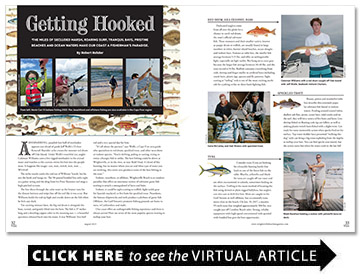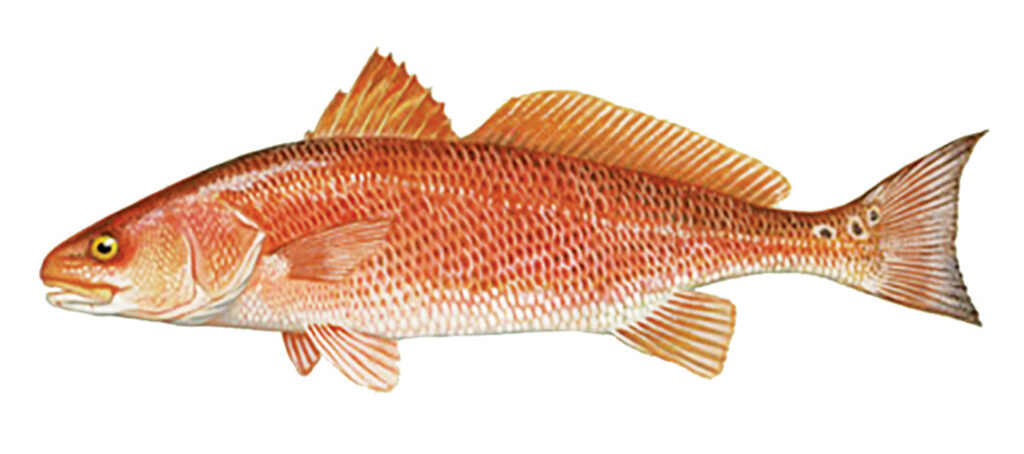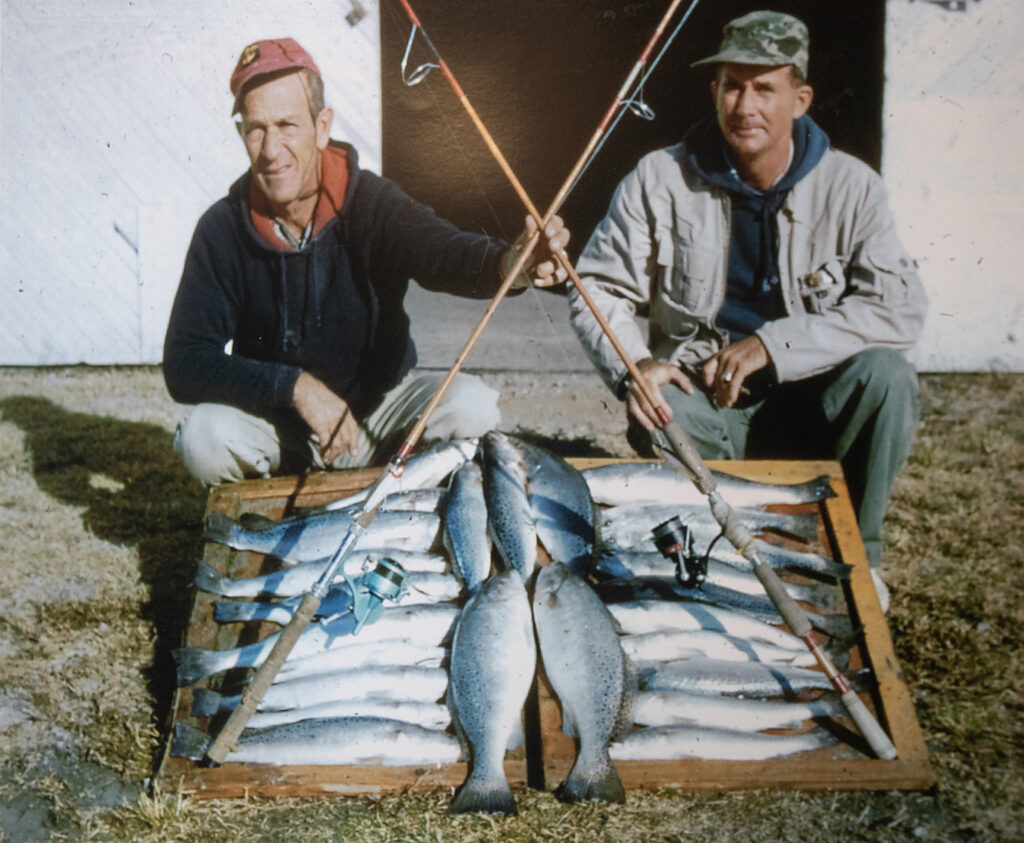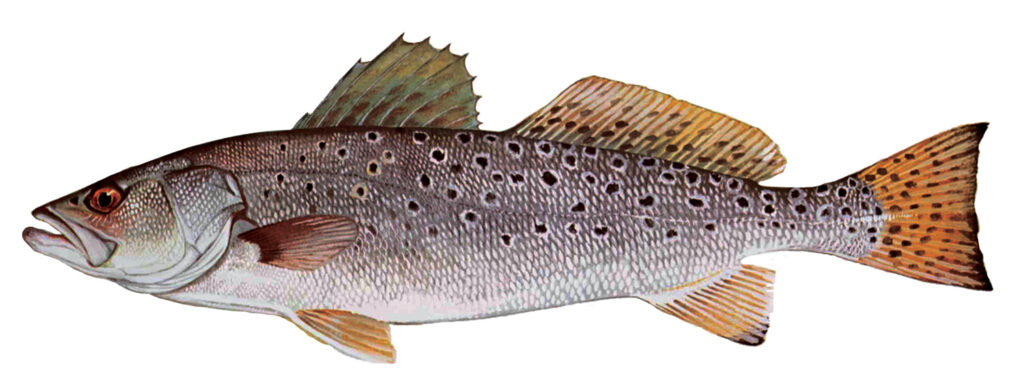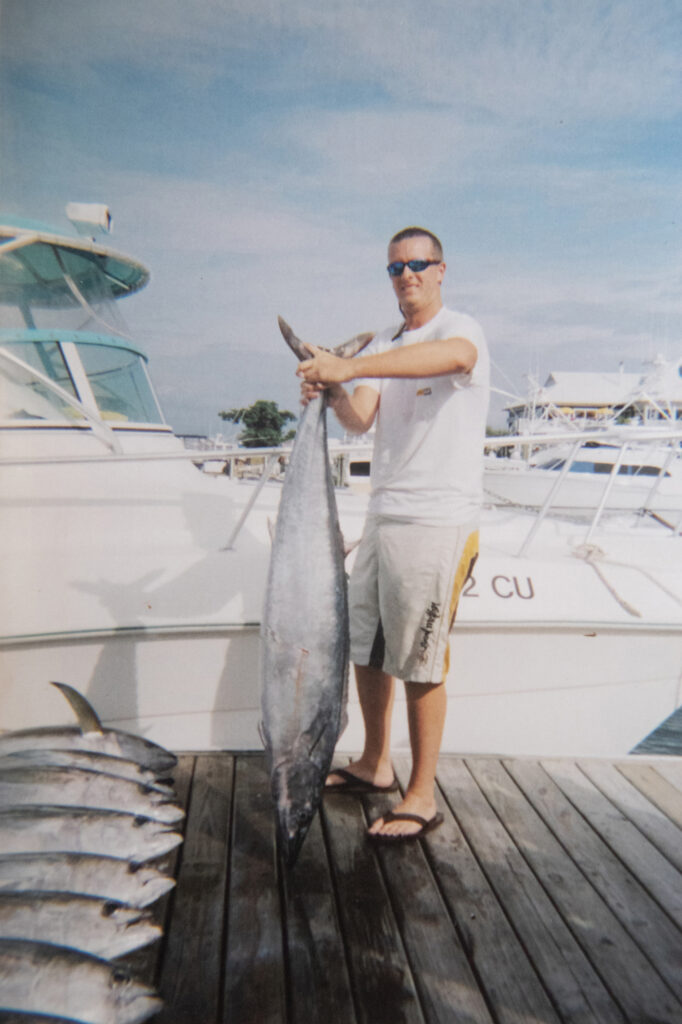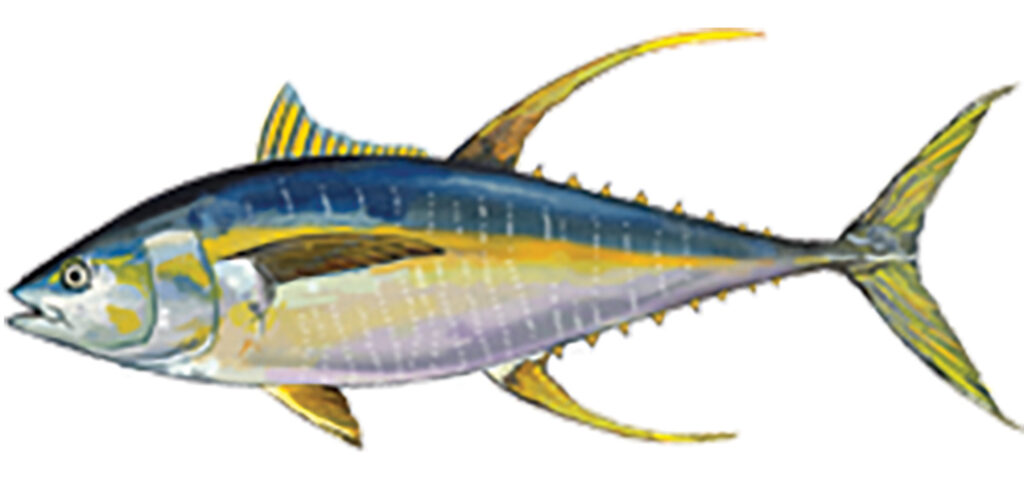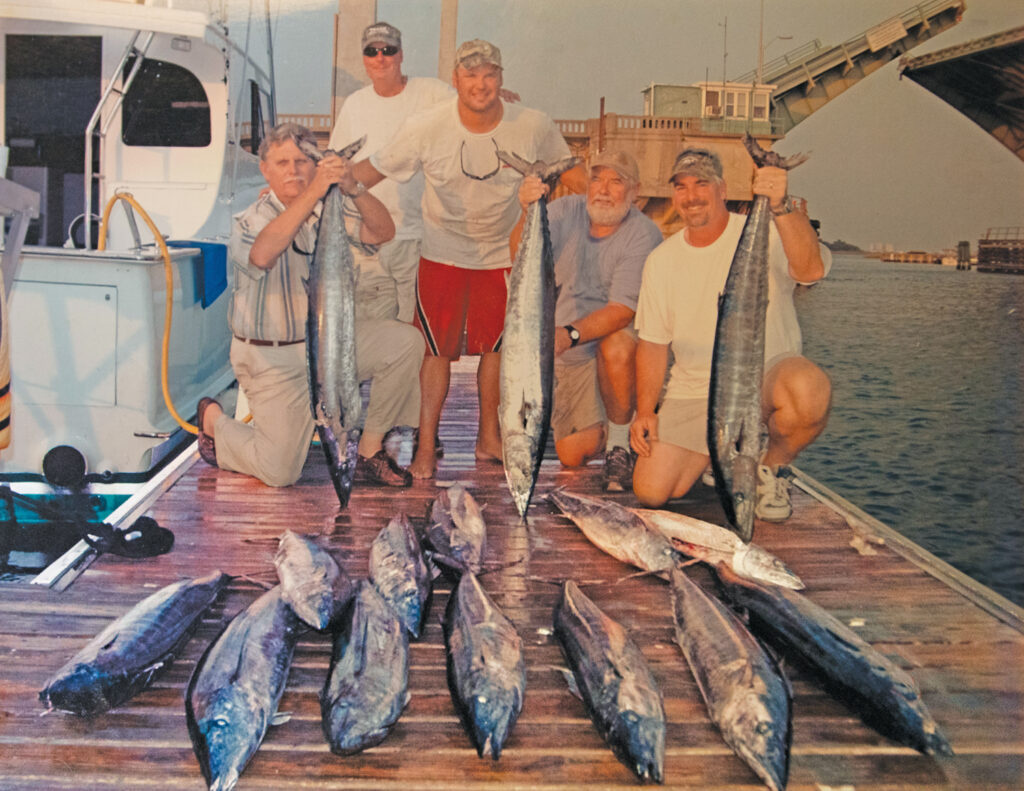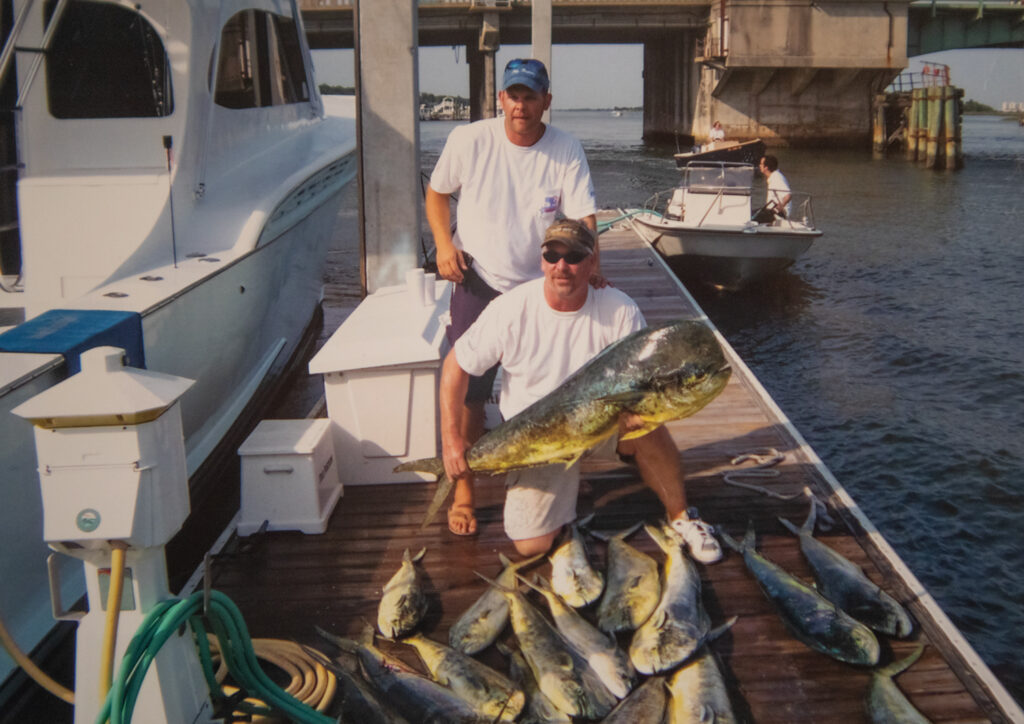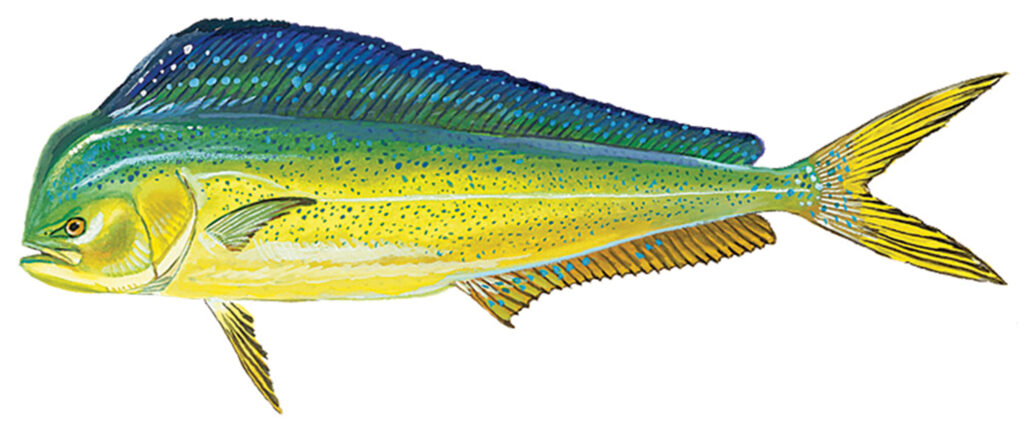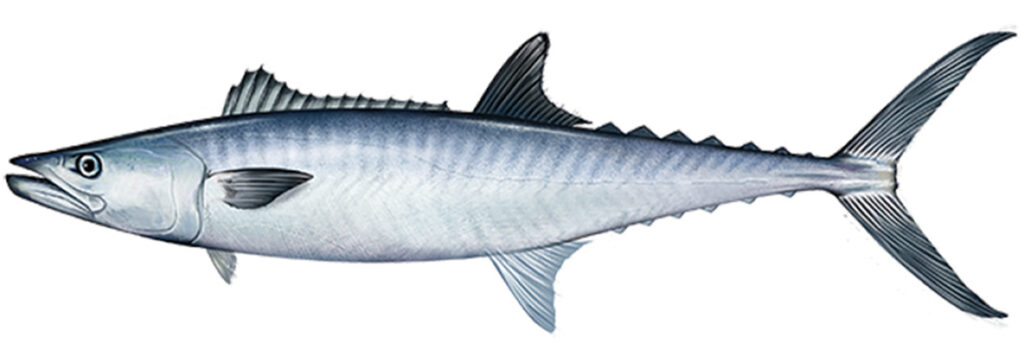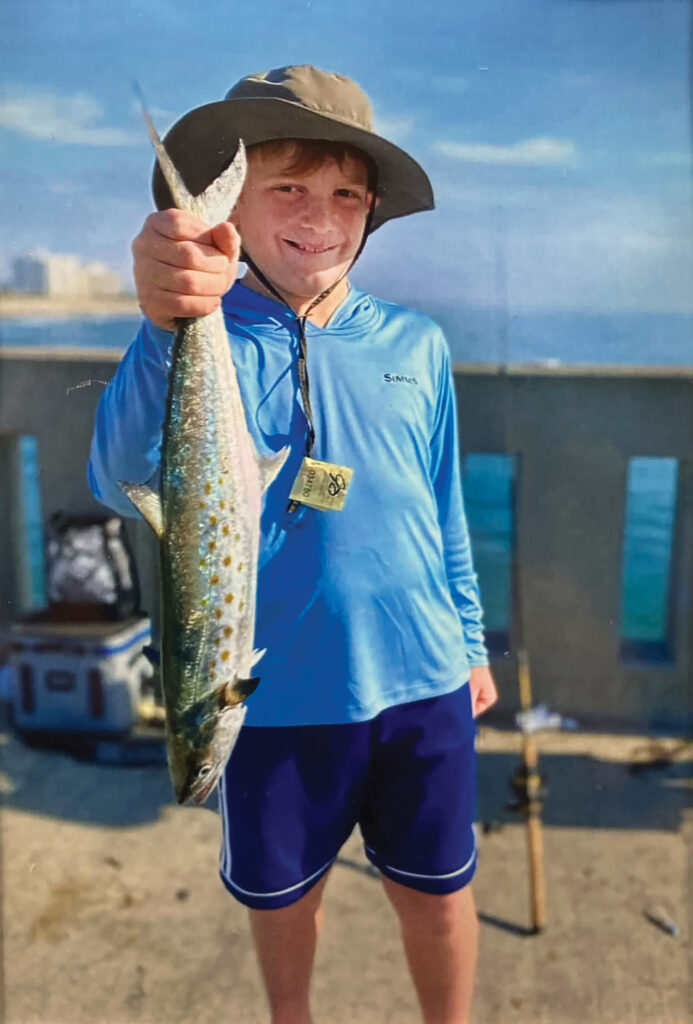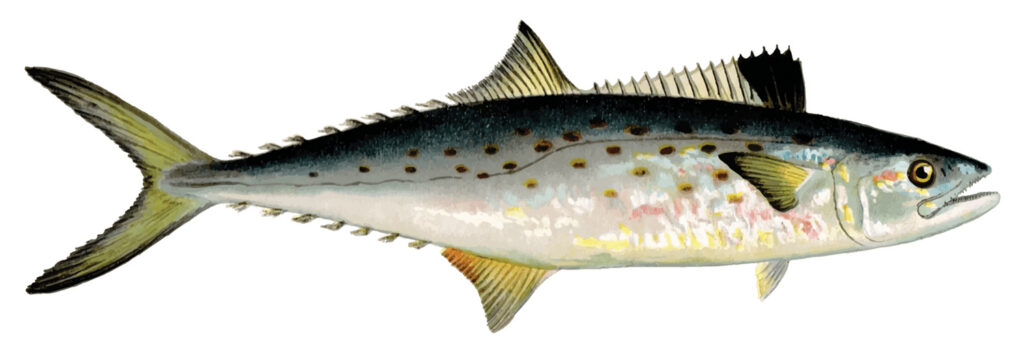Getting Hooked
The miles of secluded marsh, roaring surf, tranquil bays, pristine beaches and ocean waters make our coast a fisherman’s paradise.
BY Robert Rehder
A shimmering, purplish bait ball of menhaden appears just ahead of guide Jeff Wolfe’s 23-foot Kencraft Bayrider as he cruises for monster red drum off Oak Island. Under Wolfe’s watchful eye, angler Coleman Williams casts a live-rigged menhaden in the crystal water and watches as the current swims his bait into the purple mass. It happens like magic: cast, wait, twitch, wait, wait … WHAM!
The strike nearly yanks the rod out of Williams’ hands, but he sets the hook and hangs on. The 50-pound braided line jerks tight as a guitar string and the drag from his Penn Slammer reel sings a high-pitched scream.
The line slices through the calm water as the bruiser runs for the distant horizon and strips line off the reel like it was a toy. But Williams holds the rod tip high and cranks down on the fish when he feels any slack.
Ten exciting minutes later, the big red drum is alongside the boat, netted, and gently lifted into the bow. The fish is 37 inches long and a dazzling copper color in the morning sun — a beautiful specimen released back into the water. It was Williams’ first bull red and a very special day for him.
“It’s all about the pursuit,” says Wolfe, a Cape Fear area guide who specializes in red drum, speckled trout, and other near-shore or inshore species. “You’re drifting, poling or casting, trying to entice a hungry fish to strike. The best fishing could be down at Wrightsville, or in the river, or near Bald Head. It’s kind of like hunting, but no matter where you are and what type of water you are working, this entire area produces some of the best fishing in the state.”
Inshore, nearshore, or offshore, Wrightsville Beach is an outdoor paradise that offers an enormous variety of saltwater game fish waiting to attack a smorgasbord of lures and baits.
Inshore, it could be sight-casting to redfish, light tackle gear for Spanish mackerel, or live baits for speckled trout. Nearshore, the famous shipwrecks and reefs produce a plethora of game fish. Offshore, the Gulf Stream’s premiere fishing grounds are home to tuna, wahoo and mahi.
Our coast offers an unforgettable fishing experience and there is always action! Here are seven of the most popular species waiting to wallop your bait.
Red Drum, aka Channel Bass
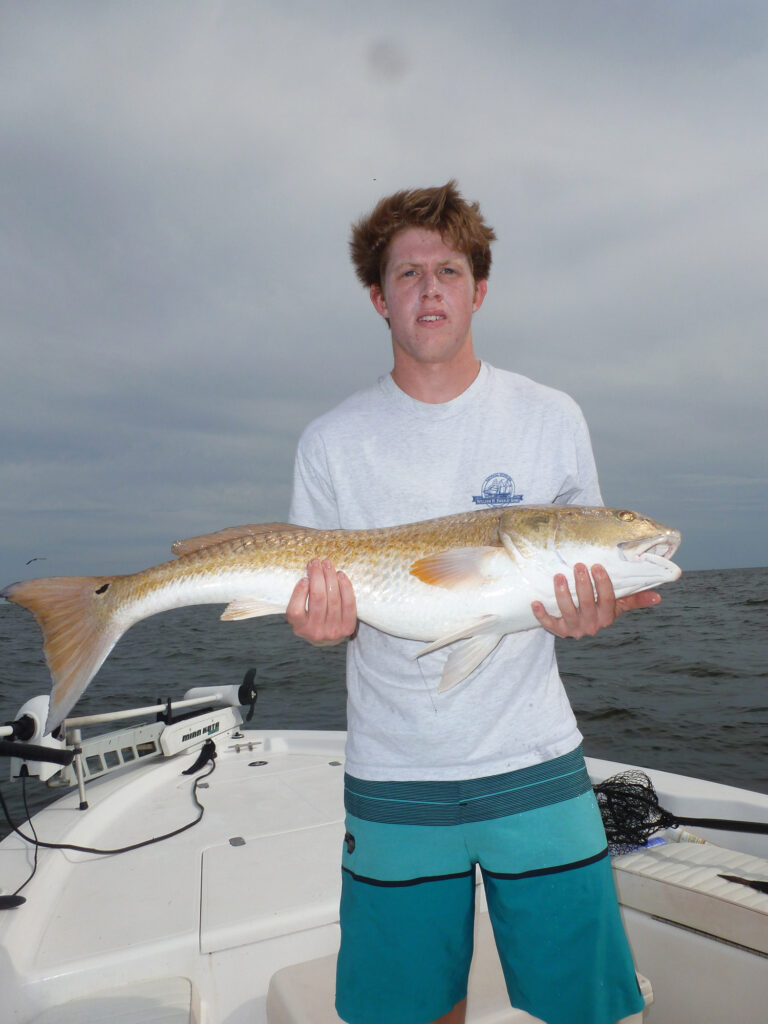
Dedicated anglers come from all over the globe for a chance to catch red drum, the state’s official saltwater fish. These monsters and their smaller variety, known as puppy drum or redfish, are usually found in large numbers in inlets, barrier island beaches, ocean sloughs and inshore bays. Famous as table fare, the smaller fish average between 5-15 lbs. and offer an unforgettable fight, especially on light tackle. But hang on to your gear because the larger fish average between 30-40 lbs. and the state record is 94 lbs. Redfish consume everything from crab, shrimp and finger mullet to artificial lures including crank baits, plastic jigs, spoons and fly patterns. Sight casting at “tailing” reds is one of the most exciting methods for a jolting strike on these hard-fighting fish.
Speckled Trout
Beauty, power and wonderful table fare describe this extremely popular saltwater fish found in inshore waters. Feeding around coastal inlets, shallow salt flats, jetties, oyster bars, tidal creeks and on the surf, they will hit a variety of live baits and lures. Live shrimp fished on floating cork rigs are killers, as well as sinking plastic twitch baits fished with a slight twist. Get ready for some memorable action when specks feed on the surface. Top water skidder lures presented “walking-the-dog” style can bring a big trout exploding from the depths to wallop your lure. You can find specks year-round, but the action turns hot when the water cools in the late fall.
Tuna
Consider tuna if you are looking for a knuckle-busting battle that leads to one of the finest fish on the table. Bluefin, yellowfin and blackfin tuna are caught off our coast and are often encountered in schools, sometimes feeding on the surface. Trolling is the main method of locating the fish using skirted or plain-rigged ballyhoo, but anglers can also cast or drift live bait. Most are caught in the Gulf Stream or well offshore, but occasionally tuna move close to the beach. On Jan. 19, 2017, a massive 95-inch tuna that weighed approximately 500 lbs. was caught just off Carolina Beach inlet. Strong, reliable equipment with high-speed conventional reels spooled with braided line give the best opportunity.
Wahoo
Chasing wahoo on our gorgeous cobalt blue ocean waters is memorable for any angler. Famous for blistering runs, wahoo is a vicious feeder and one of the most prized gamefish. Spring and fall catches rank at the top of the scale for this exciting fish that is highly sought for its exceptional table fare. Wahoo can grow to 6 feet and over 100 pounds. The state record is 150 pounds, so your tackle should be ready for a wild experience. Anglers troll for wahoo usually beginning in May when the water temperature hits the 70s and through the summer, peaking again in September and October. Wahoo are caught with boats trolling over deep waters using braided lines rigged with artificial lures, such as brightly colored ballyhoo skirts on wire leaders. They have been caught less than a mile offshore, the perfect distance for small boats under 25 feet to target these breathtaking fish, but most are typically caught trolling from offshore to the Gulf Stream.
Mahi-Mahi, aka Dolphinfish
These beautiful predators prowl deep ocean depths and are offshore favorites and aggressive travelers. Known for their blunt heads and bright golden and green colors, these hard-fighting fish are found near weed lines and underwater structures in the warmer months. When offshore waters warm during summer, they move from the Gulf Stream closer to land. Mahis are aggressive and will bite almost any lure trolling, jigging or spinning. Popular live baits include small fish such as mackerel, bluefish, pogies and spots. A favorite for trolling is a ballyhoo hooked on a 5/0 hook with a trailer treble hook. Jig heads with shrimp or mullets are great when bottom fishing offshore. Be ready with quality gear because bull mahi can weigh up to 40 pounds.
King Mackerel
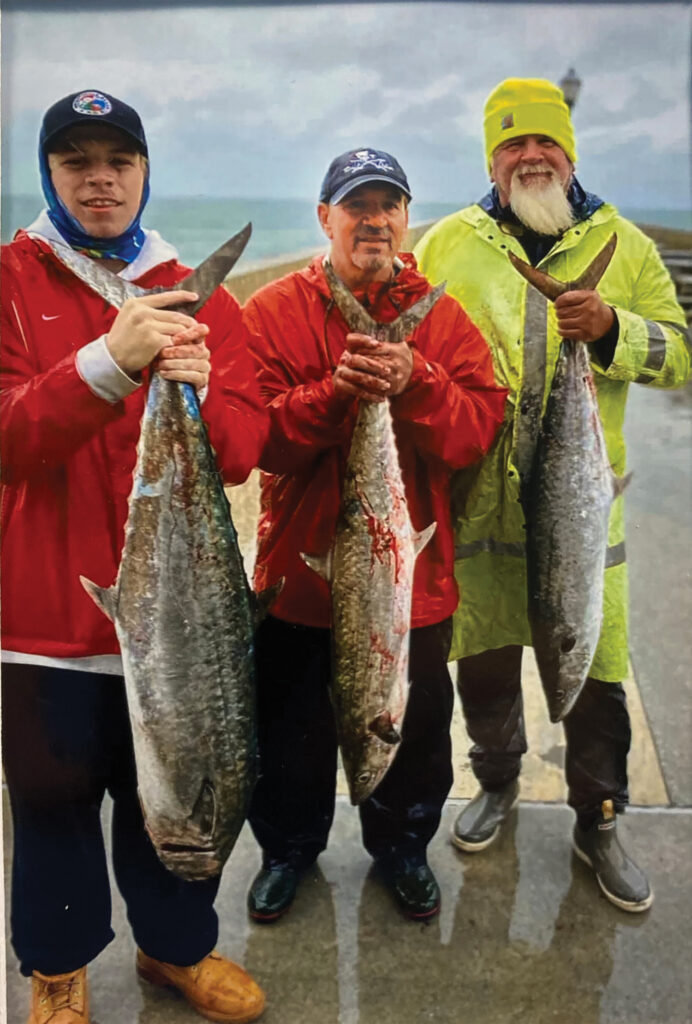
An all-time favorite of anglers, these monsters known as smokers can run to 50 pounds. Trolling with fast-moving lures, slow trolling with live bait, or pier fishing with a float rig all can produce kings. They are quite aggressive and can be caught from piers, close to the beaches, or in deep waters. Peak fishing occurs as these fish migrate through our coastal waters when the water temperature warms to about 70 degrees. Successful anglers should be fully stocked with kingfish lures, rigs, leader material, terminal tackle and live-bait hooks for quick pivots to different feeding patterns. Popular and fun to catch, these big fish go hard for bright lures and silvery live baits.
Spanish Mackerel
Beautiful, warm-water Spanish mackerel are found from early spring to late fall. They are among the fastest fish and can be very aggressive. Flashy, fast-moving lures are often the best way to catch them. Favorites of light-tackle pier fishermen, they run in large schools off the beaches or in smaller numbers in the inlets and inshore sounds. Trolling spoons are preferred for this popular species with planers to vary the depth. The action really heats up when the fish cut the water feeding on showering schools of bait with seabirds circling and diving. Another exciting way to catch Spanish involves casting a small jerk bait on light spinning gear. Lures rigged with long fluorocarbon leaders can help entice these fish that can be finicky feeders.
Southeastern North Carolina is home to some of the finest saltwater fishing in the world. Catch and release or catch and cook, fishing here is as much art as it is sport, and combines exploration, excitement, curiosity, and a wonderful opportunity to observe our waters. Want to know what’s biting, where to catch them, and license information? Look no further than local bait and tackle shops, outdoor outfitters, and many of the finest guides on the coast. Get off the clock and on the water and enjoy the raw beauty of our coast!
License Information
A coastal recreational fishing license is required for anyone 16 and over engaged in recreational fishing in North Carolina coastal waters. A license is not needed for charter boat and pier fishing, which are covered by a blanket license, but anglers should know the current marine fisheries regulations, including size and creel limits. Information can be gained from local bait and tackle shops or piers, or call the North Carolina Division of Marine Fisheries at (800) 682-2632 or visit the Marine Fisheries website.
Area North Carolina Wildlife Resources Boat Ramps
NEW HANOVER COUNTY
Intracoastal Waterway
109 Causeway Dr., Wrightsville Beach
Cape Fear River
602 Surry St., Wilmington
Snow’s Cut, Intracoastal Waterway
220 Annie Dr., Carolina Beach
Trails End, Intracoastal Waterway
621 Trails End Rd., Wilmington
BRUNSWICK COUNTY
Intracoastal Waterway
1921 Bricklanding Rd. SW, Shallotte
Oak Island, Intracoastal Waterway
4950 Fish Factory Rd. SE, Southport
Ocean Isle Beach, Intracoastal Waterway
67 Causeway Dr., Ocean Isle Beach
PENDER COUNTY
Intracoastal Waterway
613 Lewis Rd., Hampstead
Surf City, Intracoastal Waterway
517 Roland Ave., Surf City
